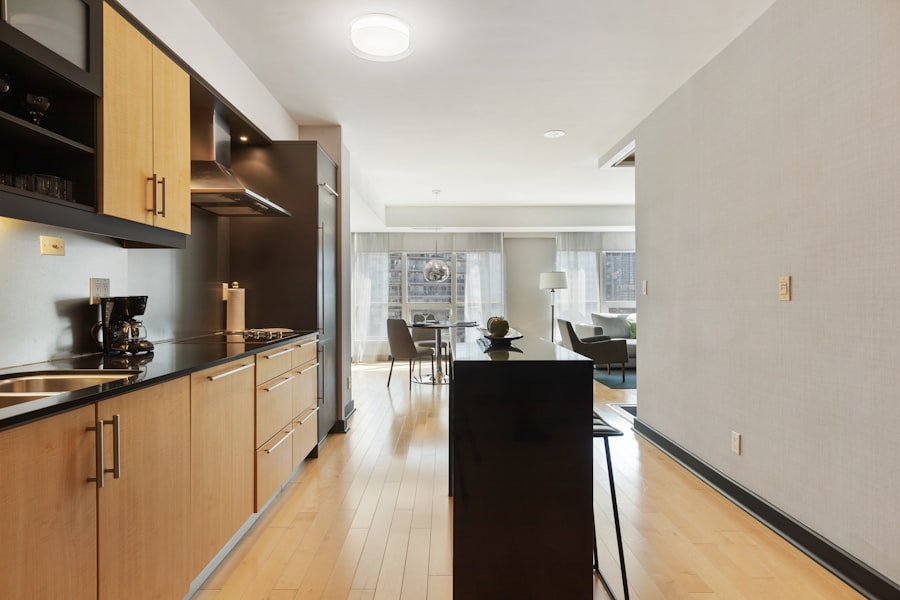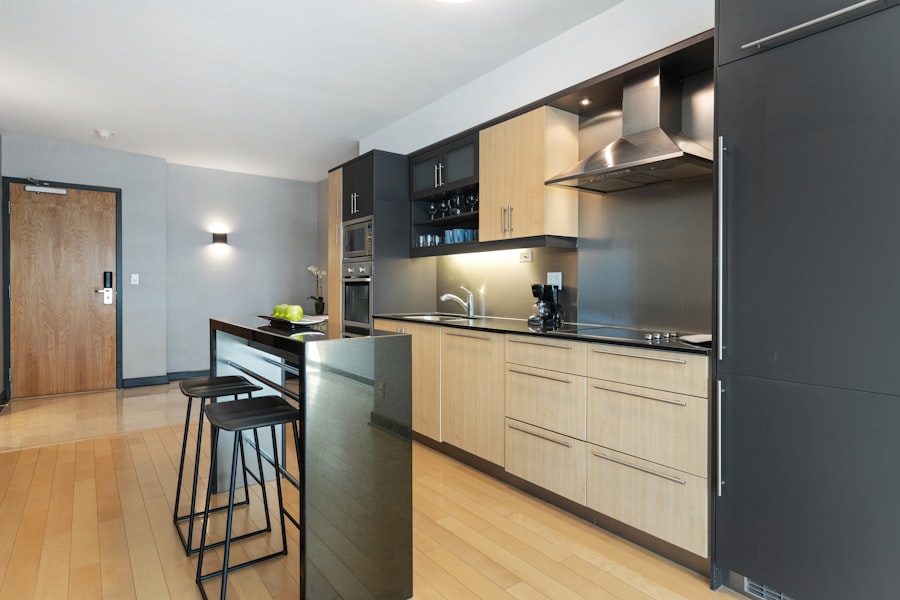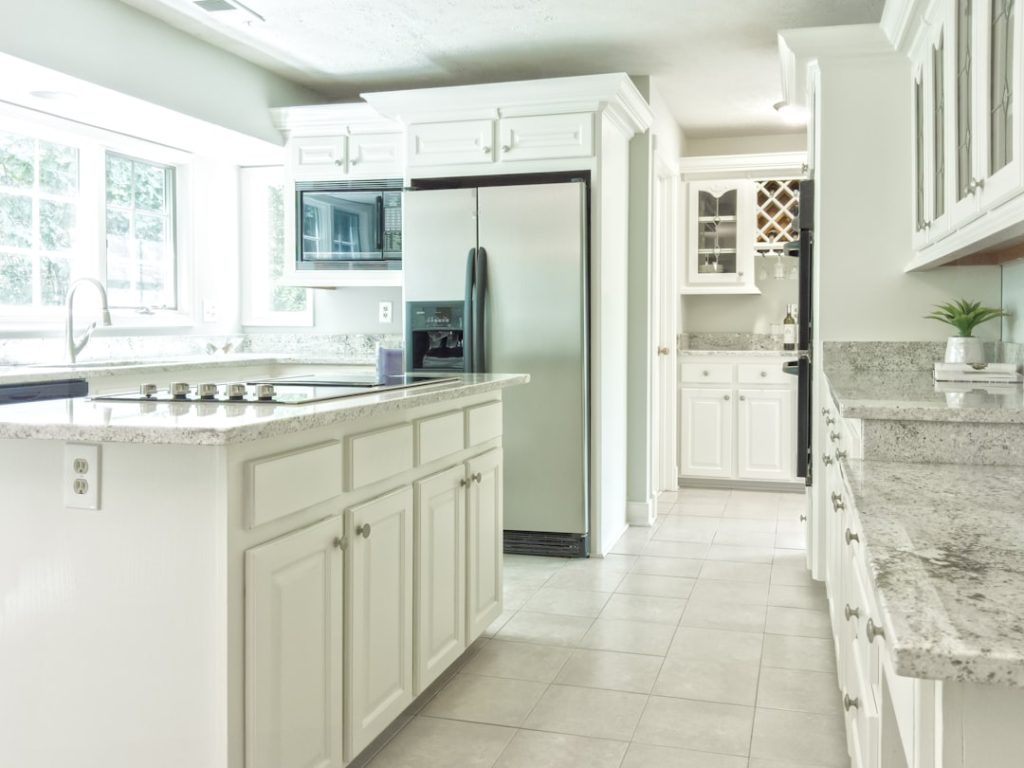Premade cabinets have gained significant popularity among homeowners and contractors alike due to their myriad advantages. One of the most compelling benefits is the cost-effectiveness they offer. Unlike custom cabinetry, which can be prohibitively expensive due to labor and material costs, premade cabinets are mass-produced, allowing manufacturers to pass on savings to consumers.
This affordability makes them an attractive option for those looking to renovate their kitchens or bathrooms without breaking the bank. Additionally, premade cabinets come in a variety of styles and finishes, providing a wide range of choices that can suit different tastes and preferences. Another significant advantage of premade cabinets is their convenience.
These cabinets are readily available at home improvement stores and online retailers, which means homeowners can often find what they need without extensive lead times. This accessibility is particularly beneficial for those who are eager to start their renovation projects. Furthermore, premade cabinets are designed for easy installation, often featuring pre-drilled holes and straightforward assembly instructions.
This user-friendly aspect allows even novice DIYers to tackle cabinet installation with confidence, saving on labor costs associated with hiring professionals.
Key Takeaways
- Premade cabinets offer cost-effective and time-saving benefits compared to custom options.
- Accurate measurements are crucial for selecting premade cabinets that fit your space perfectly.
- Installation can be straightforward by following a step-by-step guide, even for DIY enthusiasts.
- Customizing premade cabinets allows better fit and enhanced storage solutions.
- Regular maintenance ensures longevity and keeps cabinets looking fresh and functional.
Choosing the Right Style and Design
Selecting the right style and design for premade cabinets is crucial in achieving a cohesive look in your space. The first step in this process is to consider the overall aesthetic of your home. For instance, if your home features a modern design, sleek, minimalist cabinets with clean lines and glossy finishes may be the best fit.
On the other hand, if your home leans towards a more traditional style, you might opt for cabinets with ornate details, such as raised panel doors or decorative moldings. Understanding your home’s architectural style can guide you in making choices that enhance its character rather than detract from it. In addition to style, color plays a pivotal role in the design of premade cabinets.
Neutral tones like white, gray, or beige are popular choices as they provide a timeless backdrop that can easily adapt to changing trends. However, bold colors can also make a striking statement, especially in kitchens or bathrooms where you want to create a focal point. When selecting colors, consider the existing palette of your space, including countertops, flooring, and wall colors.
It’s also wise to think about how lighting will affect the appearance of your chosen cabinet color throughout the day.
How to Measure Your Space for Premade Cabinets

Accurate measurements are essential when planning for premade cabinets to ensure a perfect fit in your designated space. Start by measuring the width, height, and depth of the area where you intend to install the cabinets. Use a tape measure to get precise dimensions and record them carefully.
It’s important to measure at multiple points because walls may not be perfectly straight or level. For instance, if you’re measuring for kitchen cabinets, take note of any obstructions such as windows, doors, or electrical outlets that could affect cabinet placement. Once you have your measurements, create a detailed floor plan that includes the layout of your cabinets.
This plan should indicate where each cabinet will be placed and how they will interact with other elements in the room. Consider factors such as workflow in a kitchen or accessibility in a bathroom when designing your layout. Additionally, it’s advisable to leave some space for cabinet doors to swing open freely and for any necessary hardware installation.
By taking these steps, you can ensure that your premade cabinets will fit seamlessly into your space.
Installing Premade Cabinets: A Step-by-Step Guide
| Step | Task | Estimated Time | Tools Required | Notes |
|---|---|---|---|---|
| 1 | Measure and Plan Layout | 1-2 hours | Tape Measure, Pencil, Level | Accurate measurements ensure proper fit |
| 2 | Prepare the Wall | 30 minutes | Stud Finder, Screwdriver | Locate studs and mark for cabinet mounting |
| 3 | Assemble Cabinets (if required) | 1-3 hours | Screwdriver, Drill | Follow manufacturer instructions carefully |
| 4 | Install Upper Cabinets | 2-4 hours | Drill, Level, Clamps | Use a helper for safety and accuracy |
| 5 | Install Base Cabinets | 2-3 hours | Drill, Level, Shims | Ensure cabinets are level and flush |
| 6 | Secure Cabinets Together | 1 hour | Drill, Clamps | Fasten cabinets to each other for stability |
| 7 | Attach Doors and Hardware | 1-2 hours | Screwdriver, Drill | Adjust hinges for proper alignment |
| 8 | Final Adjustments and Cleanup | 30 minutes | Level, Cleaning Supplies | Check all alignments and clean work area |
Installing premade cabinets can be a rewarding DIY project if approached methodically. Begin by gathering all necessary tools and materials, including a level, drill, screws, and shims. Before starting the installation process, it’s wise to lay out all the cabinets in their designated positions to visualize how they will fit together.
This step allows you to make any necessary adjustments before securing them in place. The installation process typically begins with securing the base cabinets first. Start by locating the wall studs using a stud finder; this will provide a solid anchor point for your cabinets.
Once you’ve identified the studs, use a level to ensure that each cabinet is straight before attaching it to the wall with screws. If the floor is uneven, shims can be used to adjust the height of the cabinets accordingly. After securing the base cabinets, move on to the upper cabinets, ensuring they are aligned with the base units for a polished look.
Finally, install any cabinet doors and hardware according to the manufacturer’s instructions.
Customizing Premade Cabinets to Fit Your Space
While premade cabinets come in standard sizes and designs, there are numerous ways to customize them to better fit your specific needs and preferences. One popular method is to modify cabinet heights or widths by combining different units or adding fillers. For example, if you have an awkward space between two cabinets or between a cabinet and a wall, you can use filler strips to bridge that gap seamlessly.
This not only enhances aesthetics but also maximizes storage potential. Another way to customize premade cabinets is through hardware selection. The knobs and pulls you choose can dramatically alter the appearance of your cabinets and contribute to the overall style of your space.
Opting for unique or decorative hardware can add personality and flair without requiring extensive modifications. Additionally, consider adding features such as pull-out shelves or lazy Susans inside your cabinets for improved functionality and ease of access.
Tips for Maximizing Storage with Premade Cabinets

Maximizing storage in premade cabinets requires thoughtful organization and clever use of space. One effective strategy is to utilize vertical space by installing shelves at varying heights within the cabinets. This allows you to store items of different sizes efficiently while keeping everything easily accessible.
For instance, placing taller items like vases or large pots on higher shelves while reserving lower shelves for smaller items can create an organized look. Incorporating organizational tools such as drawer dividers or pull-out baskets can also enhance storage capabilities within premade cabinets. Drawer dividers help keep utensils and kitchen tools neatly arranged, while pull-out baskets make it easier to access items stored at the back of deep cabinets.
Additionally, consider using clear bins or labeled containers for pantry items; this not only keeps everything tidy but also makes it simple to find what you need at a glance.
Maintaining and Caring for Premade Cabinets
Proper maintenance is essential for preserving the appearance and functionality of premade cabinets over time. Regular cleaning should be part of your routine; use a soft cloth and mild soap solution to wipe down surfaces without damaging finishes. Avoid harsh chemicals or abrasive cleaners that could scratch or dull the cabinet surfaces.
For wooden cabinets, applying a wood conditioner periodically can help maintain their luster and protect against moisture damage. In addition to cleaning, it’s important to inspect your cabinets regularly for any signs of wear or damage. Check hinges and drawer slides for proper function; if they become loose or squeaky, tightening screws or applying lubricant can often resolve these issues.
If you notice any scratches or dents on wooden surfaces, consider using touch-up markers or wood filler to restore their appearance promptly.
Budget-Friendly Ways to Upgrade Your Space with Premade Cabinets
Upgrading your space with premade cabinets doesn’t have to be an expensive endeavor; there are several budget-friendly strategies that can yield impressive results. One effective approach is to repaint or refinish existing premade cabinets instead of replacing them entirely. A fresh coat of paint in a trendy color can breathe new life into tired cabinetry while allowing you to customize your space without significant investment.
Another cost-effective upgrade involves changing out hardware such as knobs and pulls. Swapping out dated hardware for modern options can dramatically change the look of your cabinets without requiring extensive work or expense. Additionally, consider adding decorative elements like crown molding or trim around your cabinets; these enhancements can create a more custom feel while remaining within budget constraints.
By employing these strategies, homeowners can achieve a refreshed look that enhances their living spaces without overspending on renovations.



